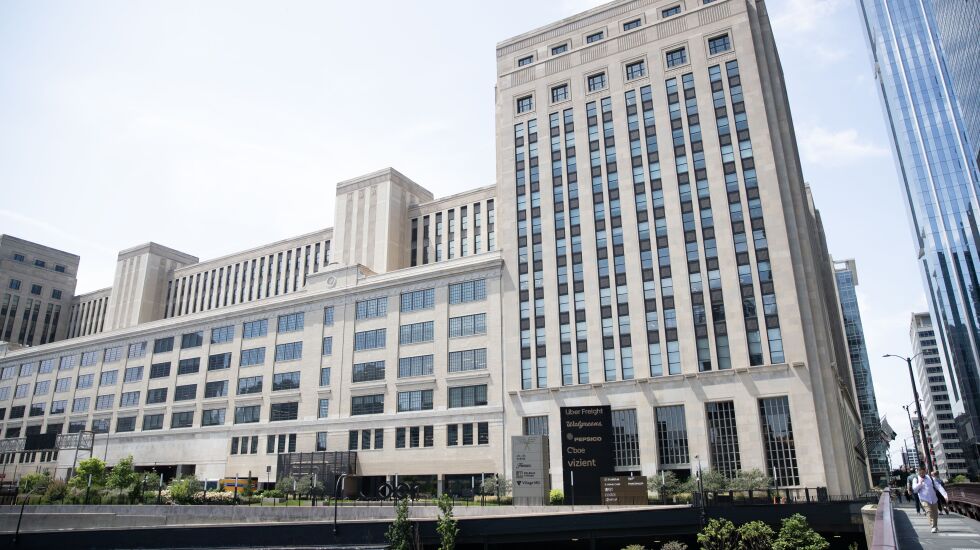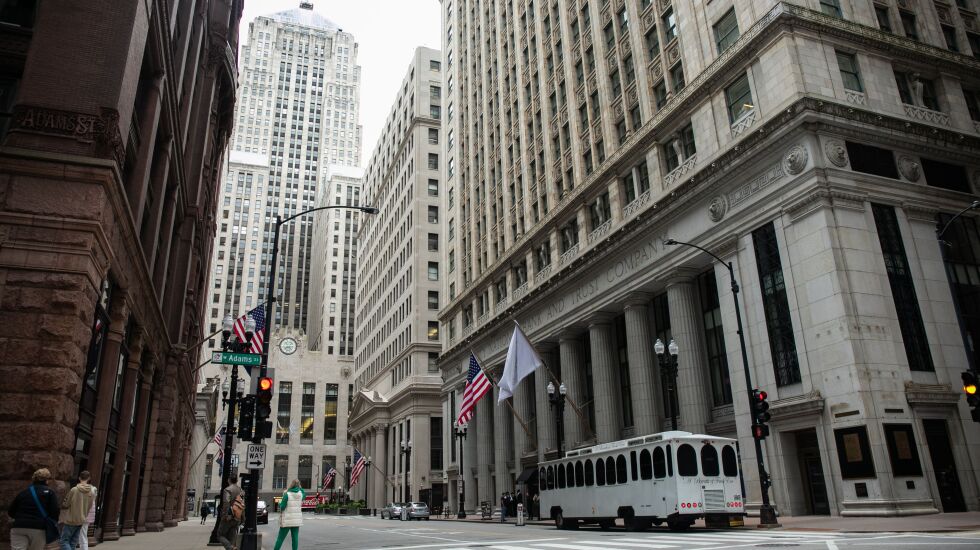
The late property tycoon Sam Zell used to send a gift every year to several hundred close friends — a custom music box designed as a commentary on some economic issue.
Just guessing here, but if Zell were around to send pals something this year, it might be a contraption depicting urban towers rocking to the sound of Carole King’s, “I feel the earth move under my feet …” The target demographic will get it.
Whatever our station in life, many of us can pause and give thanks that we don’t own a portfolio of office buildings. The pandemic shook the business down to its rebar and 2023 could be the worst year yet.
For starters, there’s word from academics that Chicago and other cities are sinking due to the sheer weight of skyscrapers. Researchers at Northwestern University said that under the Loop, the heat from human activity underground such as basements and the subway system — with an assist from global warming — is causing soil to shift and foundations to sink. Nobody is predicting imminent danger but, in time, structural engineers and insurance adjusters could be in high demand.
But that issue is still beyond most landlords’ timeframes. The bigger concern is loans coming due soon that they can’t pay because rental income is drying up. The situation applies equally downtown and in the suburbs.
Many landlords owe more in debt than the property is worth. At the start of the year, analysts predicted about a 25% drop in valuations. Now, some experts venture that valuations will fall 40% from pre-pandemic levels, a real fiscal tremor. No one is sure when the market will stabilize.
Real estate firms are out with midyear market wrap-ups offering various takes.
Avison Young said in the downtown Chicago market, $2.9 billion worth of commercial mortgage-backed securities are under pressure and could be headed toward foreclosure or forced sales. Notable buildings in debt distress include 30 N. La Salle St., the Civic Opera Building and 175 W. Jackson, a huge classical building designed by Daniel Burnham’s firm. The regal Chicago Board of Trade Building next to it already has been returned to its lender.
Jones Lang LaSalle described a split in the market, in which most leases are going to a few select buildings, including the trophy towers on Wacker Drive, the Old Post Office and the “creative offices” in Fulton Market. JLL said that since 2021, 70% of net leasing downtown occurred in just eight buildings while in 2019, 31 buildings accounted for 70% of the business.
The statistics vary among the different firms but they tell the same story. Overall office vacancy rates in downtown are more than 20%, at or near record highs for recent years. Commercial real estate firm Transwestern focused on the added wrinkle of “shadow” vacancies, space that tenants are putting out for sublease. The firm put the sublease inventory at about 8 million square feet, amounting to around 5% of everything downtown.
Tech firms are huge in this. Salesforce, having backed a new office tower on Wolf Point, has thrown 119,000 square feet back on the market and Facebook wants to sublease 115,000 square feet at 151 N. Franklin St., CBRE reported.
In the suburbs, vacancies are reported to be more than 25%. CBRE said loan distress is “limiting the pool of buildings with the stability and capital needed to finalize transactions.” Developers are changing some outmoded office sites to residential, industrial or data centers, sectors deemed more promising.
It’s worth remembering that fashions change in office usage. Landlords in some cases are hanging on for a bounceback, which might explain why average lease rates are holding firm. Some are prioritizing tenants whose employees need to be on-site, such as medical offices.
Today, the Old Post Office is the capital of commercial hipness in Chicago. Twenty years ago, it was an incredible bulk, a Goliath straddling the Eisenhower Expressway that no one knew what to do with. Some said it would make a great casino and others imagined a mind-boggling auto mall, a water park, even a mausoleum.
It took owner 601W and nearly a billion dollars in backing via JP Morgan Chase to turn the place around. Having friends like that can buy a lot of coolness.
For other buildings, challenges await, maybe down to their foundations. City Hall hopes for success in bringing more residences to the La Salle office canyon. A couple old towers could become a vertical town if plans for grocery stores or preschools come through. Can pickleball courts be far off? And who knows, someday the whole work-from-home thing could run its course as people tire of isolation and want to see friends for after-work drinks again.
But you’ll know landlords are desperate if someone resurrects that mausoleum idea. Dead space, indeed.








